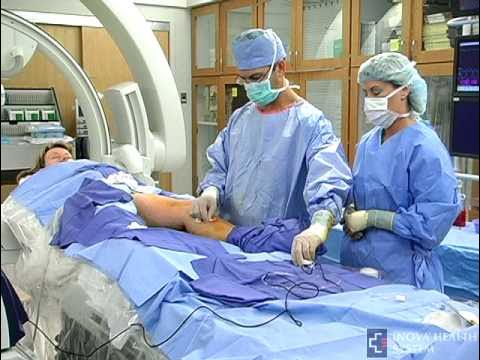Chronic venous diseases encompass a range of conditions that affect proper blood flow in the veins, particularly in the legs. Individuals experiencing symptoms such as leg pain, swelling, or visible vein changes often find that addressing these conditions requires specific care. Vein clinics specialize in managing these issues, offering comprehensive evaluations and treatments to improve comfort and quality of life. Below is some information about how a vein clinic can assist with various manifestations of chronic venous diseases.
Managing Venous Insufficiency
Chronic venous insufficiency occurs when vein walls or valves do not effectively return blood from the legs to the heart. This condition can lead to symptoms such as aching legs, swelling, or skin changes. Avein clinic plays a central role in diagnosing and managing venous insufficiency by offering procedures such as endovenous laser therapy, radiofrequency ablation, or vein stripping. By addressing the underlying issues, these treatments improve circulation and reduce discomfort.
Treating Venous Ulcers
Venous ulcers are open sores that commonly develop near the ankles due to prolonged venous insufficiency. This condition leads to increased pressure in the veins, causing the skin to break down over time. Venous ulcers can be painful, slow to heal, and significantly impact daily activities, often limiting mobility and reducing quality of life.
At a vein clinic, medical professionals use advanced diagnostic tools, such as Doppler ultrasounds and duplex imaging, to assess the underlying venous insufficiency contributing to these ulcers. Based on the findings, they provide tailored treatments, including compression therapy to improve circulation, specialized wound care to accelerate healing, and minimally invasive procedures like sclerotherapy or endovenous laser treatment to address damaged veins.
Addressing Spider Veins
Spider veins are small, visible veins that often appear as red, blue, or purple lines just beneath the skin’s surface. They typically form in areas like the legs or face. Spider veins occur when small blood vessels become dilated or damaged. This is often linked to factors such as genetics, prolonged standing, aging, or hormonal changes.
Spider veins are usually not a medical concern. If left untreated they can cause discomfort and may make some individuals feel self-conscious about their appearance. Specialists in treating spider veins offer professional care to address both cosmetic and physical concerns. These treatments are minimally invasive and typically require little to no downtime. This allows individuals to quickly return to their daily routines while improving both the appearance and health of their skin.
Relieving Leg Pain
Persistent leg pain or swelling can result from poor circulation associated with chronic venous diseases. These symptoms may disrupt daily life and worsen over time without proper care. Vein clinics offer individualized treatment plans to alleviate leg discomfort and improve functionality. This often includes diagnostic testing like ultrasound to identify venous reflux or clots and recommending therapies such as compression devices or minimally invasive vein treatments.
Connecting Patients with Vein Clinic Care
Vein clinics provide specialized care for individuals with chronic venous diseases. They encourage a targeted approach to each patient’s unique concerns. Using advanced treatments and focusing on patient well-being, these clinics help individuals regain confidence, mobility, and comfort. If you are experiencing symptoms that impact your daily life, consulting with a vein clinic can provide tailored answers and relief.
- What Is Medicaid Exclusion For Funeral Plans – Benefits of Medicaid Funeral Exclusions!
- Banner Desert Medical Center – Trusted Care in Arizona!
- Why Cranberry Femine Health – The Ultimate Natural Wellness Guide for Women!
- What Is The Best Peptide For Bone Health – A Comprehensive Overview!
- Why Is Signify Health Calling Me – Understanding the Purpose Behind the Call!

Leave a Reply